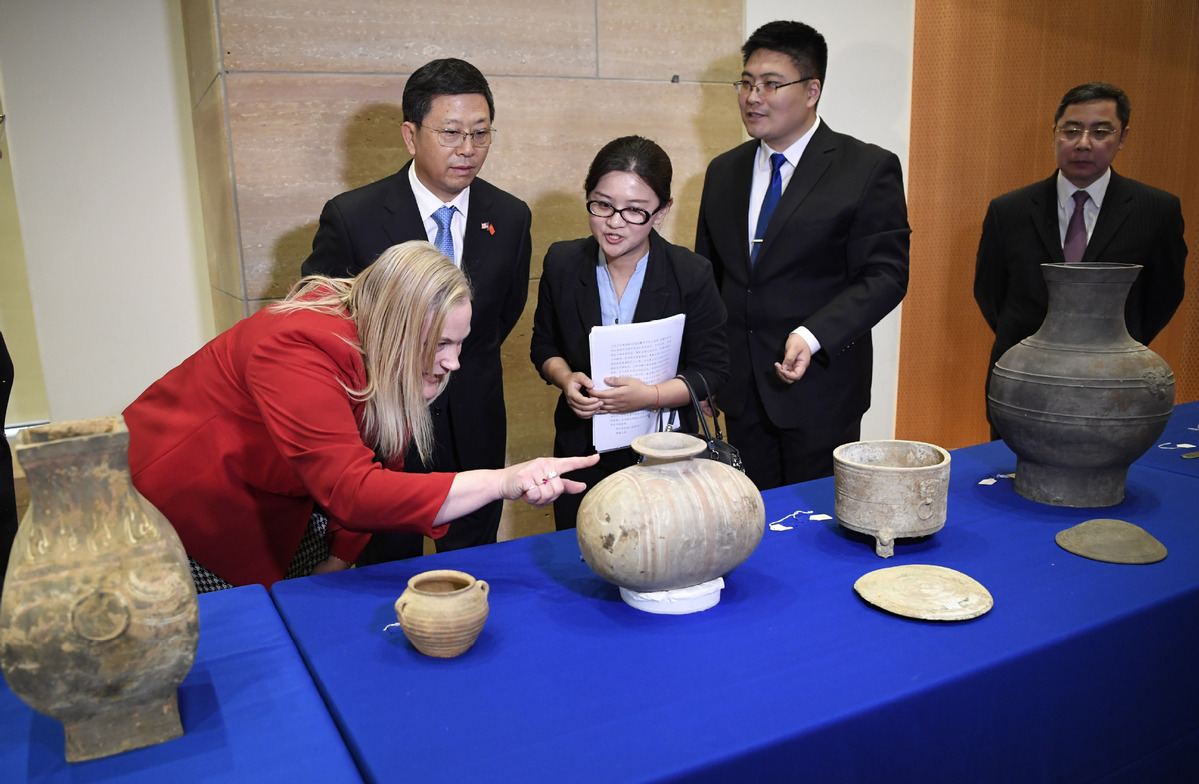Professor, students helped identify Chinese artifacts
By ZHANG RUINAN in Indianapolis, Indiana | China Daily | Updated: 2019-03-04 22:57

When FBI agent Tim Carpenter found thousands of artifacts and cultural relics at the home of a private collector in Indiana, he was stunned by their variety and number and immediately realized some were from foreign countries, including China.
“Identifying those objects is not my area of expertise,” the head of the Federal Bureau of Investigation’s Art Crime Team told China Daily. “But I tell folks that I’m an expert at finding experts.”
The 361 objects were among about 7,000 pieces the FBI seized in Waldron, Indiana, when it raided the home of a 91-year-old missionary named Donald Miller in 2014, US officials said.
That year, Carpenter turned to Holly Cusack-McVeigh, a professor of anthropology and museum studies at Indiana University-Purdue University Indianapolis (IUPUI).
In collaboration with Chinese experts from China’s Administration of Cultural Heritage, the professor’s team helped identify, move and preserve the items with Chinese patrimony, which were officially returned to the Chinese government on Thursday.
Carpenter called the professor and students heroes for their painstaking effort studying the materials and identifying the pieces originally from China.
“When the case came to light, I got a phone call from the agent in charge of the case – Agent Carpenter, who immediately recognized that he was going to need to partner with academia with source communities in order to identify and move all of the objects safely,” Cusack-McVeigh told China Daily.
“They (the FBI) were in need of assistance because of the sheer number of objects and this massive operation,” she added. “You have to have people who know how to handle objects in order to care for them properly.”
Cusack-McVeigh said that since 2014, dozens of students majoring in anthropology and museum studies and alumni from IUPUI have helped identify, move and preserve the objects.
“That first year, in the spring of 2014, I had over two dozen [students], either recent graduates or current graduate students assisting,” she said. “Many of the objects we looked at we recognized as Chinese material culture, but there were others that we were uncertain of where they belong.”
Cusack-McVeigh said she and her helpers had to work with experts in China.
“To literally pick up the phone, send an email, and ask for help,” she said.
“‘What do you think this is?’
‘This is what I think it is. Am I right?’” she said in conveying the typical dialogue.
Cusack-McVeigh said they established a database and invited foreign nations and domestic communities with an interest in materials culture “to come into the database, look at what we have, and help us determine whether it belongs to them”.
“We were also able to help handle the objects properly, help house them for shipping and then over the course of the past several years caring for them, make sure that relative humidity and temperature where they’re being stored was accurate and right for the material types that we’re housing,” Cusack-McVeigh said.
“I helped with managing the collections and prepare them for repatriation,” said Liz Ale, a graduate student at IUPUI who helped take care of a batch of Chinese artifacts. “We had to make sure everything was stable, in correct housing and stored correctly.
“We monitored the temperature, humidity and the sunlight very carefully, because any of these would degrade the objects,” she said, adding that they tried their best to keep everything in what’s called “archival housing” to preserve them as best as possible.
Ale said they treated artifacts from all nations equally because “they all have knowledge associated to them, and they are all very important to the culture they belong to”.
“This week … we finally got to meet those partners (from China) face-to-face,” Cusack-McVeigh said. “And I think that we have formed some permanent friendships,” adding that she has received an invitation to visit Beijing.
“I’m looking forward to a visit in the future where we can come to Beijing and see the objects again, in their homeland – where they belong and with their people,” she said.
























